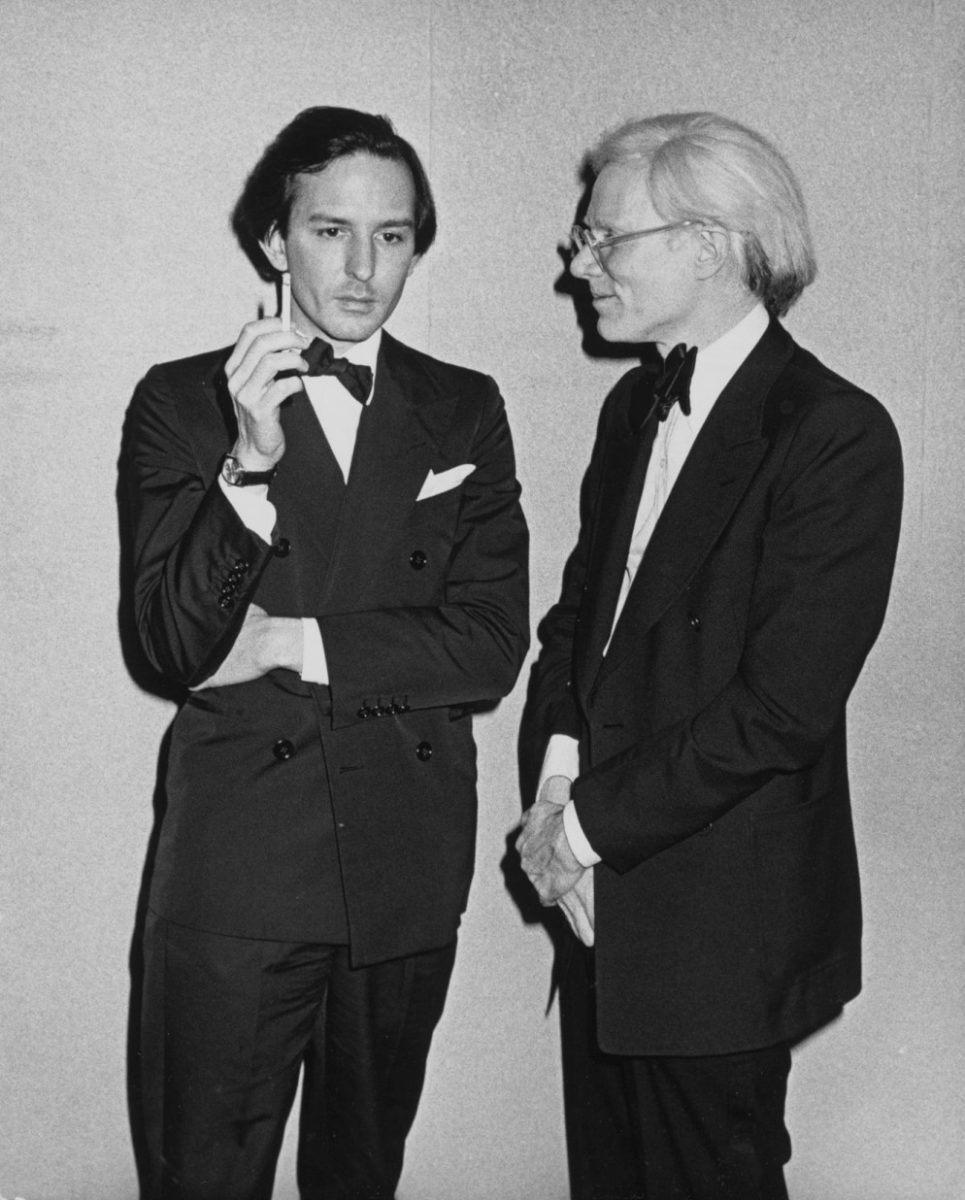Fred Hughes (1943-2001) served as Andy Warhol‘s business manager for more than 25 years, helping the artist to become an international phenomenon. Hughes also became the executor of Warhol’s estate after his death, and co-founded the Andy Warhol Foundation, for which he served as chairman until 1992.
From a small town in Texas, Hughes grew his modern art education at the college department funded and run by Dominique de Menil. Being the teacher’s pet had its perks and Hughes would individually work on several exhibitions in the college gallery. “I recognized in Fred Hughes a young man who had not only an exceptional eye,” said Menil, “but also an instinct for what was important, for quality.” Dominique and her husband, Jean, took the promising young student on art trips around the world, aiding his storage of personal connections for future job opportunities. Under their tutelage and guidance, Hughes secured his first job with Alexander Iolas at his eponymous gallery in Paris, where Iolas was known to represent avant-garde and surrealist artists such as René Magritte and Max Ernst.
Warhol and Hughes had their first encounter at Philip Johnson’s Glass House hosting a popular fundraiser on June 3, 1967. The two aesthetes talked all night. A few years later, Hughes began serving right hand to Warhol in his empire as business manager of the studio. Soon after, Hughes went on to become publicist of Interview magazine. Aside from professional standings, Hughes was also present at the studio when Valerie Solonas shot Andy Warhol in 1968 and stood beside his friend throughout the incident.
As prime business manager, Hughes persuaded Dominique de Menil and Jermayne MacAgy in 1968 to commission silk-screen portraits from Warhol. The endeavor kickstarted Warhol’s ultra-profitable commissioned portrait era, and Hughes arranged celebrity silk-screens ranging from Helene Rochas to Yves Saint Laurent. In Bob Colacello’s words, Fred Hughes’s professionalism “launched the commissioned portraits gold mine, drove up the sales and prices of the sixties paintings, expanded the limited edition print biz, cultivated important new collectors and dealers, especially in Europe.”
In 1990, Archibald Gillies convinced Hughes to appoint him as president of the Andy Warhol Foundation, who Hughes hired as a consultant two years prior. Gillies quickly began making changes, including convincing Vincent Fremont to resign as a trustee in order to make room for himself on the board. But in December of that same year, Hughes voted against making Gillies a trustee (the only one on the board to do so). This cultivated a relationship of animosity between the two, and ultimately led Hughes to formally resign as chairman of the Andy Warhol Foundation in 1992.
With his similar camp charisma, often found in The Factory, Fred Hughes wanted “to be one of the best dressed men in the world,” according to his brother, who also remarked that from a young age, Hughes knew he wanted to become very wealthy. He was briefly married to Italian fashion execute, Marina Schiano, however wrestled with his conflicting sexuality during his later homosexual relationships.
In 2001, Fred Hughes passed away at the age of 57 in his Manhattan apartment due to complications from multiple sclerosis.


